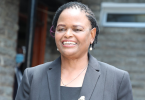Russia’s Luna 25 mission launches to the moon
The first lunar landing launched by Russia in 47 years, Luna 25, was successful.
Launching from the Vostochny Cosmodrome in the Russian Amur Oblast was the unmanned spacecraft. At 7:10 p.m. ET on Thursday, Luna 25 launched onto a Soyuz-2 Fregat rocket at 8:10 a.m. local time on Friday.
According to Reuters, there is a “one in a million chance” that one of Luna 25’s rocket stages may crash there, thus residents of a Russian town were temporarily evacuated on Friday morning.
RELATED: Ukraine hits Russian oil tanker with sea drone hours…
It is anticipated that the spacecraft will first enter an orbit around Earth before changing to a lunar orbit and eventually dropping to the moon’s surface. On August 18, 1976, Luna 24, Russia’s final lunar lander, touched down on the moon.
According to Reuters, there is a race to see which nation will arrive first when India’s Chandrayaan-3 mission and Luna 25 both intend to touch down at the lunar south pole on August 23. However, Roscomos stated that because their exact landing zones differ, it is not anticipated that the two missions will interfere with one another, according to Reuters.
Luna 25’s journey
Luna 25, also called the Luna-Glob-Lander, will study the composition of the moon’s polar soil and the plasma and dust contained in the very thin lunar exosphere, or the moon’s scant atmosphere, for one year.

According to NASA, the four-legged lander is equipped with landing rockets, fuel tanks, solar panels, computers, a robotic arm with a scoop to gather lunar samples, as well as a variety of equipment to analyse the samples and the exosphere.
RELATED: Top 10 Keywords with High CPC in Canada in 2023
Initially, Luna 25, Luna 26, Luna 27, and the ExoMars rover were all going to be jointly developed by Roscosmos and the European Space Agency.
But after Russia invaded Ukraine in April 2022, this collaboration came to an end, and the ESA Council decided to “discontinue cooperative activities with Russia.”
The future of moon exploration
Meanwhile, Chandrayaan-3, which includes a lander, rover and propulsion module, Lifted off on Jily 14 and entered lunar orbit last weekend.
The mission is India’s second attempt to land at the lunar south pole after Chandrayaan – 2 Crashed into the moon in September 2019. If successful, the latest mission would make India only the fourth country to achieve the complicated feat, behind the United States, the former Soviet Union and China. Once on the surface, Chandrayaan-3 will spend a couple of weeks conducting a series of scientific experiments to learn more about the moon’s composition.

In late 2025, during the Artemis III mission, NASA intends to place a woman and a person of colour on the moon for the first time at the lunar south pole.
Due to its prospective riches, this region of the moon has been the subject of numerous missions. A crucial factor to take into account as organisations like NASA look to stably study the moon for extended lengths of time in the future is the possibility that deep, permanently shadowed craters in the lunar south pole contain ice that might be utilised for fuel, oxygen, and drinking water.
“We’re going to see several spacecraft, some perhaps from other nations, that are going to be landing on the south pole in the near future,” NASA Administrator Bill Nelson said during a news conference on Tuesday. “There is a resurgence of interest in the moon, which is naturally due to the possibility of water. To prepare for a trip to Mars and a safe return, we’re travelling back to Earth to study how to survive in a deep space environment for extended periods of time.
Nelson responded, “We wish them well,” when questioned about the forthcoming Luna 25 launch, stating that NASA and its Russian counterpart had been working together since 1975, going back to the Soviet era.







